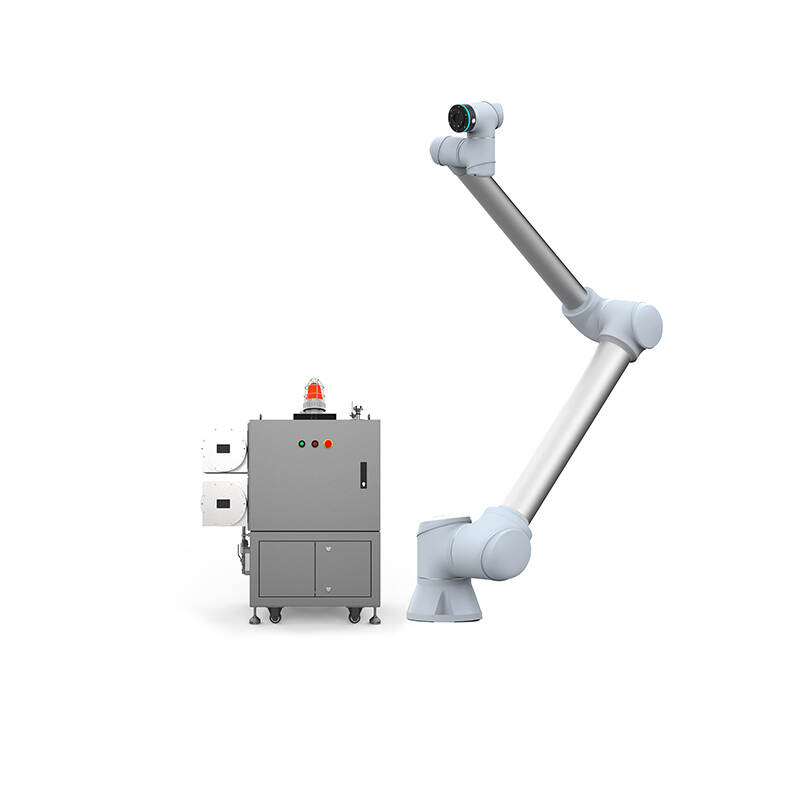Email format error
Email cannot be empty
Email already exists
6-20 characters(letters plus numbers only)
The password is inconsistent
Email format error
Email cannot be empty
Email does not exist
6-20 characters(letters plus numbers only)
The password is inconsistent


Robust Cobots for Hazardous Environments: Enhancing Safety and Efficiency
In today’s fast-paced industrial landscape, the integration of robotics into the workplace has become crucial, especially in hazardous environments. Robust cobots for hazardous environments play an essential role in ensuring safety while maintaining high productivity levels. This post explores the significance, benefits, and applications of these collaborative robots (cobots) designed specifically for dangerous settings, along with best practices for their deployment.
Understanding Cobots and Their Importance
What Are Cobots?
Cobots, or collaborative robots, are designed to work alongside human operators. Unlike traditional industrial robots, cobots are built with safety features that allow them to operate in close proximity to humans without the need for extensive safety barriers. This capability is especially critical in hazardous environments where safety risks are heightened.
The Need for Robust Cobots in Hazardous Settings
In industries such as manufacturing, oil and gas, and chemical processing, workers often face dangerous conditions that pose significant risks to their health and safety. Robust cobots for hazardous environments are engineered to handle challenging tasks that would otherwise expose human workers to risks, including chemical exposure, extreme temperatures, and physical hazards.
Benefits of Using Robust Cobots in Hazardous Environments
Enhanced Safety
One of the most significant advantages of deploying robust cobots for hazardous environments is the enhancement of workplace safety. These cobots can perform tasks that would typically require human intervention in dangerous conditions, reducing the likelihood of accidents and injuries.
Increased Efficiency
Cobots improve operational efficiency by performing repetitive and mundane tasks with precision. In hazardous environments, where human workers may be less productive due to safety concerns, cobots can maintain consistent performance without the same level of risk.
Cost-Effectiveness
Investing in robust cobots for hazardous environments can lead to substantial cost savings over time. By reducing workplace injuries and improving efficiency, companies can lower their operational costs and avoid potential legal issues related to workplace safety.
Key Features of Robust Cobots for Hazardous Environments
Durability and Resistance
Cobots designed for hazardous environments must be robust and resistant to various factors, including:
Corrosive Substances: Many industrial settings expose equipment to chemicals that can degrade materials. Cobots must be constructed from durable materials resistant to corrosion and chemical damage.
Extreme Temperatures: In environments with extreme temperatures, cobots must be able to operate efficiently without overheating or freezing, which can affect performance and safety.
Dust and Particulates: Some industries generate significant dust or particulate matter that can hinder machinery. Cobots need protective enclosures to ensure continued operation in such conditions.
Advanced Safety Features
To enhance safe automation in industrial explosion-proof cobots, several safety features should be integrated:
Force Limiting: Cobots are designed to detect unexpected resistance and stop their operation to prevent injury to human operators.
Emergency Stops: All cobots must have easily accessible emergency stop functions, allowing operators to halt operations immediately if necessary.
Real-Time Monitoring: Many modern cobots are equipped with sensors that monitor their surroundings, ensuring they can adapt to changing conditions in real-time.
Applications of Robust Cobots in Hazardous Environments
Chemical Processing
In chemical manufacturing, robust cobots for hazardous environments are used to handle dangerous substances. These cobots can automate the mixing, packaging, and transportation of chemicals, significantly reducing the risk of human exposure to toxic materials.
Oil and Gas Industry
The oil and gas sector involves numerous hazardous tasks, from drilling to refining. Cobots equipped with specialized tools can assist in maintenance and monitoring, reducing the need for workers to enter potentially dangerous areas.
Manufacturing
In the manufacturing industry, robust cobots for hazardous environments can assist in assembly lines where exposure to harmful materials is a concern. They can handle tasks such as welding, painting, and quality inspection, which would otherwise place workers at risk.
Best Practices for Implementing Robust Cobots
Assessing Risks
Before integrating cobots into hazardous environments, it’s essential to conduct a thorough risk assessment. This assessment should identify potential hazards and evaluate how cobots can mitigate these risks while improving productivity.
Training and Education
Proper training for employees on how to interact with cobots is crucial. Workers should be educated about the cobots' capabilities and safety features to maximize their effectiveness and minimize risks.
Continuous Monitoring and Maintenance
Regular maintenance is vital to ensure that robust cobots for hazardous environments function correctly. Continuous monitoring of their performance can help identify issues early, preventing potential accidents.
Collaboration with Experts
Engaging with robotics experts and safety consultants can provide valuable insights into the best practices for deploying cobots in hazardous settings. Their expertise can help organizations navigate the complexities of safe automation and ensure compliance with industry standards.
Future Trends in Cobot Technology for Hazardous Environments
AI and Machine Learning Integration
The future of robust cobots for hazardous environments lies in the integration of artificial intelligence (AI) and machine learning. These technologies will enable cobots to learn from their surroundings and adapt their behaviors, improving their efficiency and safety capabilities.
Improved Sensor Technology
Advancements in sensor technology will enhance the ability of cobots to detect and respond to changes in their environment. Enhanced sensors can improve their safety features, enabling them to operate more effectively in hazardous settings.
Increased Customization
As industries evolve, the demand for tailored solutions will grow. The ability to customize cobots for specific applications in hazardous environments will become increasingly important, allowing companies to address unique challenges effectively.

Conclusion
Robust cobots for hazardous environments represent a significant advancement in industrial automation, providing solutions that enhance safety and efficiency. As industries continue to prioritize workplace safety, the deployment of these collaborative robots will become more prevalent. By understanding the benefits, features, and best practices associated with cobots, organizations can ensure a safer working environment while maximizing productivity.
The future of automation in hazardous environments is bright, and embracing this technology will undoubtedly lead to safer workplaces and more efficient operations. The journey toward safe automation in industrial explosion-proof cobots is just beginning, and organizations that invest in these technologies today will be better positioned for success tomorrow.

